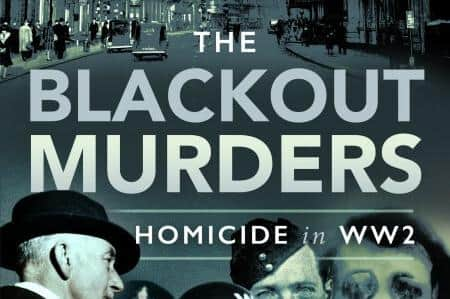New book ‘The Blackout Murders: Homicide in WW2’ claims to have solved 80 years mystery of Colne murder
and live on Freeview channel 276
‘The Blackout Murders: Homicide in WW2’ by Neil R. Storey features several real life murder cases from across the country during the Second World War.
A whole chapter is devoted to the case of a Colne murder and a possible connected homicide in Suffolk in 1944.
Victim


Advertisement
Hide AdAdvertisement
Hide AdYoung Trawden woman Eileen Barrett was the Colne victim, and although her death came from a stab wound, it is belived a prolific strangler was her likely attacker.
Eileen (19), a stalwart of St Mary the Virgin Church in Trawden, had been to an evening class at Colne Technical School when she was attacked at a bus stop on the corner of Linden Road and Albert Road.
Murderer and suspect
Storey’s book reveals that a Colne man, Arthur Heys, was found guilty and hanged for the rape and murder of Winifred Evans in November, 1944, who was serving in the WAAF at the time while he was in the RAF.
Storey now believes Heys was the man also responsible for the murder of Eileen Barrett three years earlier, and an attack on a Burnley woman, Teresa Baldwin, on that same March, 1941.
Advertisement
Hide AdAdvertisement
Hide AdHe said: “Heys had been born in Colne, grew up in the area and knew it well; in fact, he could have known every dark doorway, alley and blacked-out street. He was living with his wife and three children on Harold Street, just five minutes’ walk away from the bus stop on the corner of Linden Road and Albert Road where Eileen Barrett had suffered the stab wound that would kill her.
“He had been employed as a silk cloth weaver at a number of mills in the Colne area up to 1939, but during the early war years had set himself up as a shoe repairer in Colne.
“The escalation of violence and evolution of method with each attack exhibits a pattern that can be easily recognised from modern profiles of predatory sex offenders and serial killers.
“The modus operandi of the Colne Strangler and Heys was similar too. Each young woman was alone during a blackout and was subjected to a sudden, surprise attack. The attacks also took place on public roads, which had numerous places for the perpetrator to hide as he waited for a suitable victim, and multiple routes by which he could make his escape.
Advertisement
Hide AdAdvertisement
Hide Ad“Both early attacks began with a grab to the throat. Teresa Baldwin had to fight hard to fend off her attacker. Eileen Barrett was taken by complete surprise and killed by a deep penetrating stab from a knife. The attack on Winifred Evans was so sudden she did not have a chance to fight back either, and her killer satisfied his sexual desires by raping her.”
Justice
Storey ends the chapter by writing: “Hopefully police will reopen the case file one day, if only to investigate Heys and rule him out as a suspect. Or perhaps these similarities will prove to be more than just coincidences and the family of Eileen Barrett will finally know the identity of her killer, and maybe take some comfort in the knowledge that he had
been brought to justice."
